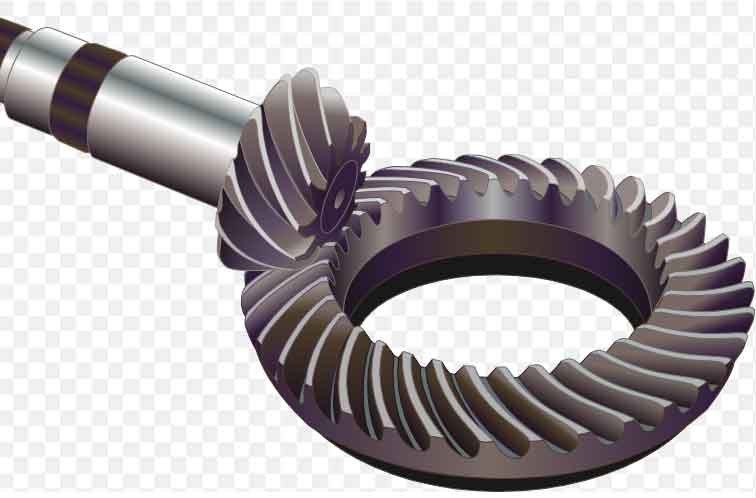Spiral bevel gears are a type of bevel gears that have curved tooth lines. They are widely used in precision engineering applications where high torque transmission, smooth operation, and precise motion control are required. Let’s explore their design and function in more detail:

- Tooth Geometry: Spiral bevel gears have curved teeth that are cut in a spiral pattern around the gear’s cone-shaped surface. The spiral shape allows for gradual tooth engagement, resulting in smoother and quieter operation compared to straight bevel gears. The tooth geometry also provides excellent load distribution and improved contact ratio, which enhances the gear’s load-carrying capacity and reduces wear.
- Contact Pattern: The curved tooth lines of spiral bevel gears create a unique contact pattern during meshing. Ideally, the contact pattern should be concentrated in the center of the gear tooth face width to ensure proper load distribution. Achieving a well-centered and uniform contact pattern is crucial for optimal gear performance, and it can be achieved through precise gear design, manufacturing, and adjustment of gear meshing parameters.
- Axial Thrust: Spiral bevel gears generate axial thrust forces due to the helical tooth geometry. The axial thrust can be managed by incorporating thrust bearings or designing the gear system to accommodate the axial forces. Proper consideration of the axial thrust is important to ensure stable gear operation and prevent excessive wear.
- Precision Manufacturing: Spiral bevel gears require precise manufacturing techniques to achieve the desired tooth geometry and high gear quality. The manufacturing process typically involves CNC machining or specialized gear cutting methods, such as gear grinding or gear shaping. These processes ensure accurate tooth profile, tooth alignment, and surface finish, resulting in excellent gear performance and reliability.
- Applications: Spiral bevel gears find application in various industries where precise motion control and high torque transmission are essential. They are commonly used in automotive differentials, aerospace systems, machine tools, robotics, and high-performance gearboxes. Their ability to transmit power at various angles, handle high loads, and provide smooth and quiet operation makes them suitable for demanding applications.
- Gear Arrangements: Spiral bevel gears can be configured in different arrangements depending on the application requirements. The most common arrangements include the “crossed-axis” configuration, where the gear axes intersect at 90 degrees, and the “non-intersecting” configuration, where the gear axes are parallel but offset from each other. Each arrangement offers specific advantages in terms of load distribution, compactness, and ease of assembly.
Spiral bevel gears are renowned for their ability to handle high loads, provide smooth operation, and offer precise motion control. Their curved tooth geometry, combined with precise manufacturing techniques, ensures efficient power transmission and improved gear life. When properly designed, manufactured, and installed, spiral bevel gears can meet the demanding requirements of precision engineering applications.
